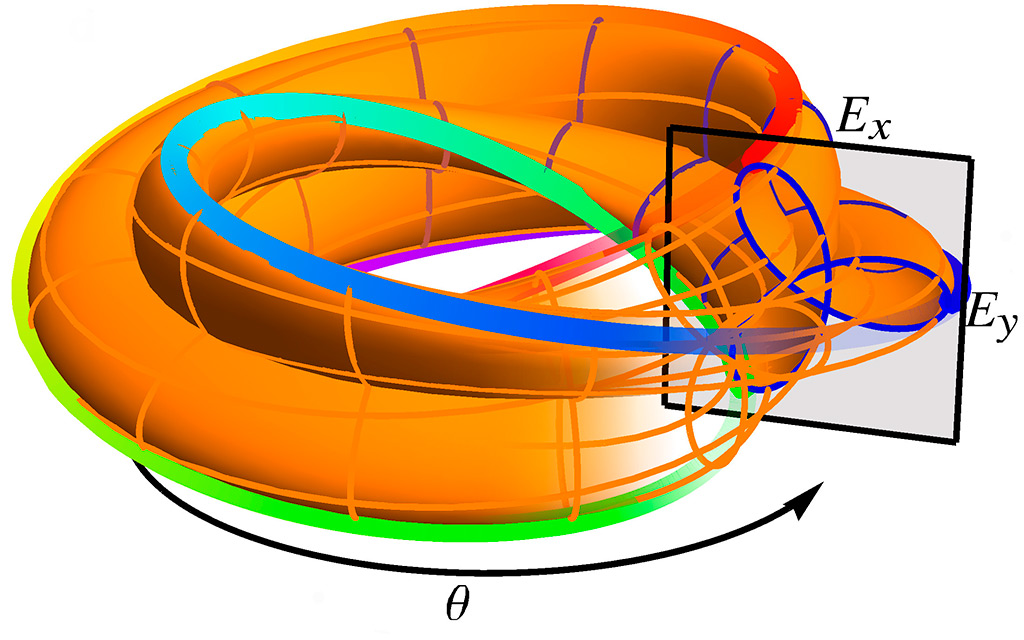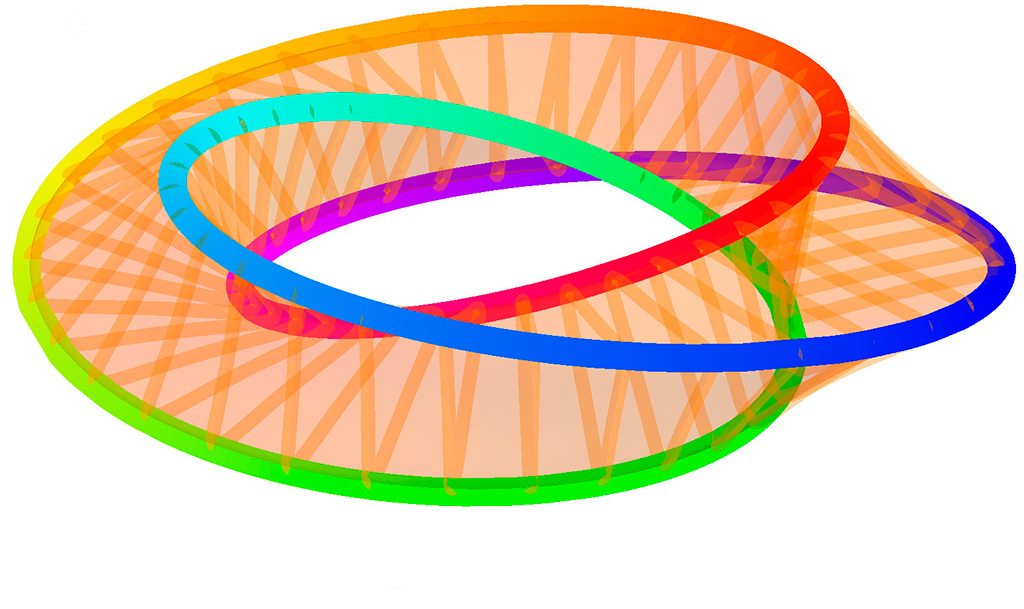Around age six, we start learning how to tie our shoelaces, making knots that look like ribbons — or possibly more complex forms, if we are a little clumsy. We use knots every day, but the type of knots we generally use is associated with physical objects, things we can touch. In a recent study, published in two papers, joint collaborations by ICREA/ICFO researchers demonstrated multicolored light twists in new knotted ways. They have broken theoretical and experimental ground in this new field, uncovering new types of knots for twisted light and a new type of angular momentum.
In the first paper, published in Nature Photonics, ICFO researchers Emilio Pisanty, Gerard Jiménez Machado, Veronica Vicuña-Hernández, Antonio Picón, and Alessio Celi, led by ICREA Prof. at ICFO Maciej Lewenstein and UPC Prof. at ICFO Juan P. Torres, have designed a beam of light with a polarization state that forms three-lobed trefoils at each point, by combining light of different frequencies, and making the trefoils connect to each other in a way such that the light beam, as a whole, has the shape of a knot. These beams also exhibit a new kind of angular momentum, associated with the unusual symmetry of the beams, which remain unchanged when they’re rotated — but only when the polarization is rotated by a specific portion of the rotation in space. This new quantity is termed the torus-knot angular momentum, because of the type of knot in the beams, and the researchers were able to experimentally confirm its presence.
In the second paper, published in Physical Review Letters, ICFO researchers Emilio Pisanty and Antonio Picón, led by ICREA Professor at ICFO Maciej Lewenstein, in collaboration with researchers from the University of Salamanca and from CU Boulder, show that the new type of angular momentum is conserved in interactions. They show, via theoretical simulations, that at extremely high intensities, many photons of light can be combined into single photons with high energy, and that these new, bigger photons carry the combined torus-knot angular momentum of the original, smaller photons.
Reference

